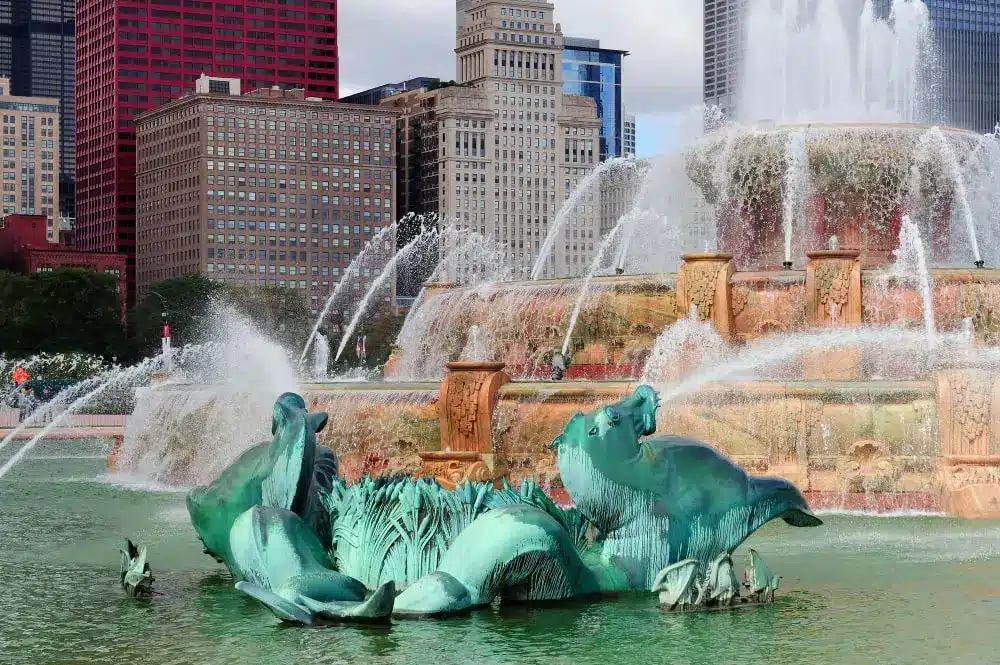
You do not need a design degree to love the skyline of Chicago, Illinois. This friendly Chicago architecture guide shows where to stand, what to notice, and how to connect styles across Chicago, Illinois without rushing. Think of it as a curated walk with a few optional detours that make the city feel both grand and easy to read.
How to use this guide
Map stops in clusters so you spend more time looking up and less time in transit. Start downtown for the greatest density, then add a neighborhood swing if time allows. In every season, the light off Lake Michigan shapes how Chicago, Illinois looks in photos, so try to see key spots in the morning or late day.
Need a ride for key transfers
For airport pickups, hotel to venue rides, and late night returns anywhere in Chicago, Illinois, book Skyline Chicago Limo and keep your schedule smooth.
The downtown essentials
Begin around the Michigan Avenue bridge and Wacker Drive. From here you can compare Art Deco setbacks at the Carbide and Carbon Building with the crisp modern lines of Mies van der Rohe at 330 North Wabash. Walk a few blocks to Tribune Tower to see stones from world landmarks set into its façade, then cross to the Wrigley Building for bright terra cotta that seems to glow. This compact loop captures a century of ideas that defined Chicago, Illinois.
Why a river perspective matters
The river cuts a canyon through downtown and puts façades at eye level. An architecture boat tour is the fastest way to understand how the city grew, but you can also stroll the Riverwalk and read plaques between bridges. Either way, the bends reveal sightlines that explain why Chicago, Illinois became a classroom for skyscraper design.
Modern icons you can enter
Skydeck at Willis Tower delivers altitude, while 360 at the former Hancock gives lake and river views in one sweep. Inside the Rookery, the light court remodeled by Frank Lloyd Wright shows the transition from load bearing walls to steel frames. If you like the clean grid of glass and steel, visit Federal Center to feel how Mies organized space in Chicago, Illinois for people, not just for photos.
A quick style decoder
Prairie School spreads buildings low and long. Art Deco stacks upward in sleek tiers. International Style strips decoration to structure. Postmodern puts wit back on the roofline. You will see all four within a few blocks, which is why newcomers often say Chicago, Illinois feels like a living museum with trains running through it.
Neighborhood architecture worth the ride
If you have half a day, ride to Oak Park for Frank Lloyd Wright’s Home and Studio and a street full of early houses. Or head south to Hyde Park for the Museum of Science and Industry and the Gothic notes around the University of Chicago. Both trips add context for what you saw downtown and show how Chicago, Illinois nurtured experiments beyond the business core.
Photo spots and timing
Morning light warms the east faces along Michigan Avenue. Late afternoon lights the west banks of the river. After dark, bridges and lobbies glow for a different mood. Winter clears the air for sharp horizons; summer adds reflections and crowds. Whatever the season in Chicago, Illinois, bring a small tripod or brace your camera on railings to keep shots steady.
Respect the buildings
Most towers have public lobbies you can enter, but follow posted rules. Security staff are used to visitors who love the architecture of Chicago, Illinois, and a polite ask often gets you a great angle. Stay off private steps, keep flashes off glass, and give wedding parties the space they need.
Half day route to sample it all
Start at Millennium Park for the mirror curves of Cloud Gate, then walk to the Art Institute to see how the Beaux Arts museum meets a crisp modern addition. Head north on Michigan Avenue, loop the bridge area, and drop to the Riverwalk for close up façades. Cross to LaSalle Street for canyon views, then end at the Rookery or Federal Center. It is a tight loop that keeps Chicago, Illinois within easy reach of coffee breaks and train stops.
Eat and break well
Plan one reservation and keep other bites quick so you can linger where it is beautiful. Food halls and corner cafés near the Loop turn tables fast. In neighborhoods, choose spots within a short walk of your next stop so you keep momentum through Chicago, Illinois and save your feet for the good views.
Why it matters
Great cities teach through their streets. The way materials meet the sky, how lobbies welcome people, how bridges frame water, each decision tells a story of work and community. Spend a day with the buildings of Chicago, Illinois and you will leave with a calm sense of order, new angles for photos, and a deeper feel for how design shapes daily life.
Next step
Ready for close up views along the water. Read Chicago Riverwalk in One Afternoon: A Stop by Step Plan to turn these buildings into an easy riverside loop through Chicago, Illinois.
